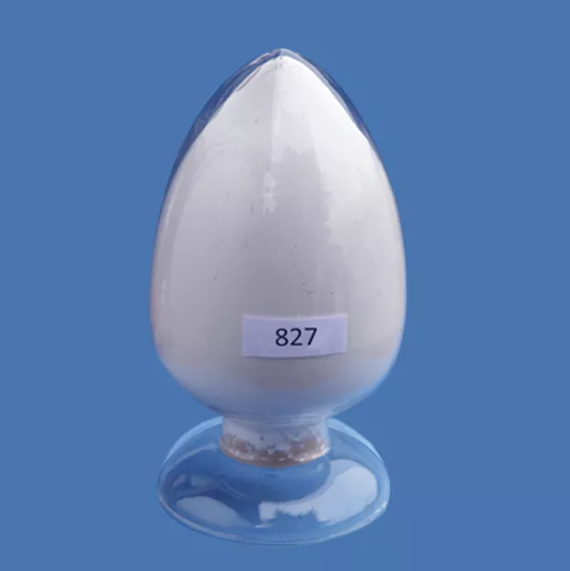Sealing a pond is an essential task for pond owners who want to maintain water levels and avoid leaks that can harm the ecosystem. Bentonite is one of the most effective materials for this job due to its natural swelling properties, which allow it to create an impermeable seal when hydrated.
In this article, we'll explore how much bentonite is required to seal a pond and the factors that influence the amount needed for effective sealing.
What is Bentonite and How Does it Work for Sealing Ponds?
Definition and Composition of Bentonite
Bentonite is a naturally occurring clay that is made primarily of montmorillonite, a mineral that forms from the decomposition of volcanic ash. It has remarkable properties that make it perfect for sealing applications, particularly in ponds. When bentonite comes into contact with water, it swells significantly, expanding to fill the gaps and cracks in the soil. This swelling ability creates a barrier that prevents water from seeping through, which is why it’s so widely used for sealing ponds.
There are different types of bentonite, but sodium bentonite is the most commonly used for pond sealing. This is due to its high swelling capacity, which can expand up to 30 times its dry volume when hydrated. The swelling action allows bentonite to fill voids in the soil and form a solid, waterproof barrier.
How Bentonite Seals a Pond
When bentonite is applied to the pond bed, it spreads out in a thin layer. As the bentonite absorbs water, it expands and fills the tiny pores and cracks in the soil. This creates an impermeable layer that effectively prevents water from leaking through. The self-healing nature of bentonite means that even if small cracks form over time, the material can continue to expand, sealing those cracks and ensuring the pond remains water-tight.
This unique ability to expand and fill voids makes bentonite one of the most effective materials for sealing ponds. Whether the pond is newly built or has been in use for some time, bentonite offers a reliable solution to prevent water loss due to seepage.
Why Is it Important to Use the Right Amount of Bentonite for Pond Sealing?
Preventing Water Loss
The primary reason to use bentonite for pond sealing is to prevent water loss caused by seepage. If a pond is leaking, it can quickly lose water, which not only affects the pond's ecosystem but also disrupts the aquatic life that depends on stable water levels. This water loss can also lead to costly repairs. Using the right amount of bentonite ensures that the pond retains its water, keeping the ecosystem intact and the pond functioning properly.
Using too little bentonite can result in incomplete coverage, allowing water to seep through areas that weren’t properly sealed. On the other hand, applying too much bentonite can lead to unnecessary costs and waste. Therefore, calculating the exact amount required based on the pond's size, soil type, and depth is crucial.
Impact on Pond Ecosystem
A pond is home to various forms of plant and animal life. Maintaining stable water levels is critical for preserving this ecosystem. If water levels drop due to leaks, it can lead to the loss of habitat for aquatic creatures and negatively impact plant life. By sealing the pond properly with the correct amount of bentonite, pond owners can ensure that the pond remains a healthy environment for its inhabitants.
Proper sealing also prevents soil erosion, which can lead to silt buildup in the pond. Over time, this can affect the water quality and disrupt the natural filtration systems of the pond. By sealing the pond effectively, bentonite helps maintain both the integrity of the pond structure and the health of the surrounding ecosystem.
Key Factors That Determine How Much Bentonite You Need to Seal a Pond
Pond Size and Depth
The size and depth of the pond are two of the most important factors in determining how much bentonite is required. Larger ponds generally require more bentonite because there is more surface area that needs to be covered. The depth of the pond also influences the amount of bentonite required. Deeper ponds require more bentonite to ensure that the material effectively seals the entire surface.
Typically, the deeper the pond, the more bentonite is needed to create a seal that prevents water seepage from both the surface and the deeper layers. For example, a shallow pond may only require 1 to 1.5 pounds of bentonite per square foot, while a deeper pond may need 2 to 3 pounds per square foot to ensure adequate coverage and sealing.
Soil Type and Porosity
The soil surrounding the pond plays a crucial role in determining the amount of bentonite needed. Soils with high porosity, such as sandy soils, require more bentonite to fill the gaps and prevent water from leaking through. On the other hand, clay soils, which have low porosity, typically require less bentonite to form an effective seal.
The permeability of the soil can significantly affect how much bentonite is needed. For example, in areas where the soil is sandy or has high permeability, more bentonite is necessary to ensure that the water stays contained within the pond. Conversely, clay soils have natural sealing properties and require less bentonite.
Pond Condition and Leaks
If the pond has existing leaks, you will need to apply more bentonite to address those problem areas. Leaks are often located at the pond's bottom or along its sides, where the soil is more porous. Identifying and repairing leaks before applying bentonite is essential for ensuring that the material is applied evenly and effectively.
The presence of leaks may require additional bentonite to cover areas that have more significant water seepage. Leaking ponds can lose water quickly, so addressing these issues promptly is crucial to maintaining the pond’s integrity.
How to Calculate the Amount of Bentonite You Need
General Guidelines for Estimating Bentonite Requirements
The amount of bentonite required for sealing a pond is influenced by several factors, including the pond's size, depth, and the porosity of the soil. However, there are general guidelines to help estimate how much bentonite is needed:
Clay soils: Typically require 1 to 1.5 pounds per square foot of bentonite.
Sandy or high-porosity soils: Require 2 to 3 pounds per square foot of bentonite to effectively seal the pond.
For a 1-acre pond, an estimated 63 to 125 tons of bentonite are needed, depending on the soil type and depth.
These figures are estimates, and the exact amount will vary based on the specific conditions of your pond.
Using an Online Bentonite Calculator
For a more accurate estimate, an online bentonite calculator can help determine the exact amount of material required. By inputting your pond's surface area and depth, the calculator will provide a more precise recommendation for how much bentonite to purchase. This tool helps avoid under- or overestimating the amount of bentonite required, ensuring that you have enough material to properly seal the pond.

Common Application Methods for Bentonite in Pond Sealing
The Blanket Method
The blanket method is a common technique for sealing ponds. In this method, bentonite is spread in a continuous layer over the pond’s surface. Typically, a thickness of 1 to 2 inches is applied. After the application, a protective layer of soil is added on top to ensure that the bentonite remains in place and forms a solid seal. This method is most effective for ponds that can be drained and for newer ponds that need an initial seal.
The Mixed Blanket Method
For ponds with existing water levels, the mixed blanket method can be used. In this method, bentonite is mixed with the pond’s native soil and then applied to the pond bed. This combination ensures that the bentonite mixes well with the soil, providing a better seal. The mixture is then compacted to minimize soil porosity and prevent water from seeping through. This method works well for ponds that are already filled with water but still need sealing.
The Sprinkle Method
The sprinkle method is used when the pond cannot be drained. In this technique, bentonite is sprinkled over the surface of the water. The bentonite sinks to the bottom, where it absorbs water and expands, filling gaps and cracks. This method is best for small ponds or areas with minor leaks. It’s a simple and effective solution for sealing small problem areas without requiring a full application.
Preparing Your Pond for Bentonite Application
Site Preparation
Before applying bentonite, it’s essential to prepare the pond bed. This includes removing any debris such as rocks, sticks, and vegetation. Any materials that could puncture the bentonite layer must be removed to ensure proper sealing. The soil should be smoothed out and cleared of any obstacles that could interfere with the bentonite’s ability to form an effective seal.
Proper Soil Compaction
Once the bentonite is applied, the soil must be properly compacted. Compaction is crucial because it reduces the porosity of the soil, helping the bentonite stay in place and create an impermeable layer. Compaction can be achieved using a roller or compactor, ensuring that the soil and bentonite mixture forms a solid barrier that will effectively prevent water seepage.
Post-Application Maintenance and Monitoring
Regular Monitoring for Leaks
Once the bentonite has been applied, regular monitoring is essential to check for leaks. Keep an eye on the water level and observe any areas where water may begin to seep through. If you notice a significant decrease in water levels, additional bentonite may be required to seal those areas.
Reapplying Bentonite
If leaks develop over time or if there is a noticeable drop in water levels, you may need to reapply bentonite to maintain the pond’s seal. Since bentonite is self-healing, small cracks may be sealed naturally, but larger leaks may require additional material to ensure an effective seal.
Common Mistakes to Avoid When Sealing a Pond with Bentonite
Insufficient Application
A common mistake is applying too little bentonite. It’s important to follow the recommended application rates to ensure that the entire surface area is covered adequately. Insufficient application can result in gaps and cracks that allow water to seep through.
Applying Bentonite on Wet Surfaces
Another mistake is applying bentonite on wet or overly moist surfaces. For the bentonite to adhere properly to the soil, the surface should be dry or at the correct moisture level. Applying bentonite to wet surfaces can result in uneven coverage and poor sealing.
Not Compacting Soil Enough
Failing to compact the soil properly can lead to ineffective sealing. After applying bentonite, it’s crucial to compact the soil to ensure the material stays in place and forms a dense, impermeable layer. Without proper compaction, the bentonite may fail to seal the pond effectively.
Conclusion
Properly sealing a pond with bentonite is crucial for preventing water loss and ensuring the health of the pond’s ecosystem. By understanding how much bentonite is needed and selecting the right application method, you can create a long-lasting, impermeable seal for your pond. Whether you're sealing a small pond or a large one, following the right steps will help you achieve the best results and maintain a healthy, vibrant pond for years to come.
Qinghong offers a wide range of high-quality organic bentonite clay. Feel free to contact us for more information.
Frequently Asked Questions (FAQs)
Q: How much bentonite do I need for a 1-acre pond?
For a 1-acre pond, you typically need between 63 to 125 tons of bentonite, depending on the depth and soil type.
Q: Can bentonite seal a pond liner?
Yes, bentonite can reinforce and seal pond liners by filling small cracks or gaps.
Q: How long does bentonite take to seal a pond?
Most swelling and sealing occur within 2 to 3 hours of applying bentonite, but full expansion may take 24 to 48 hours.
Q: How do I calculate the bentonite-to-soil ratio?
A typical bentonite to soil mix ratio is 30% bentonite to 70% native pond soil.










